- Visitor:403
- Published on:
Meditation in Kashmir Shaivism: The Background Theory
When Shiva wants to realize his Shiva nature nothing can stop you. But one can say, “I want to realize it now. So, why? Why am I not realizing it? What is stopping Shiva?”. Right now, according to the Kashmir Shaivites, “You” the Shiva is playing the role of a spiritual seeker. He just wants to play the role of a seeker who wants to realize!
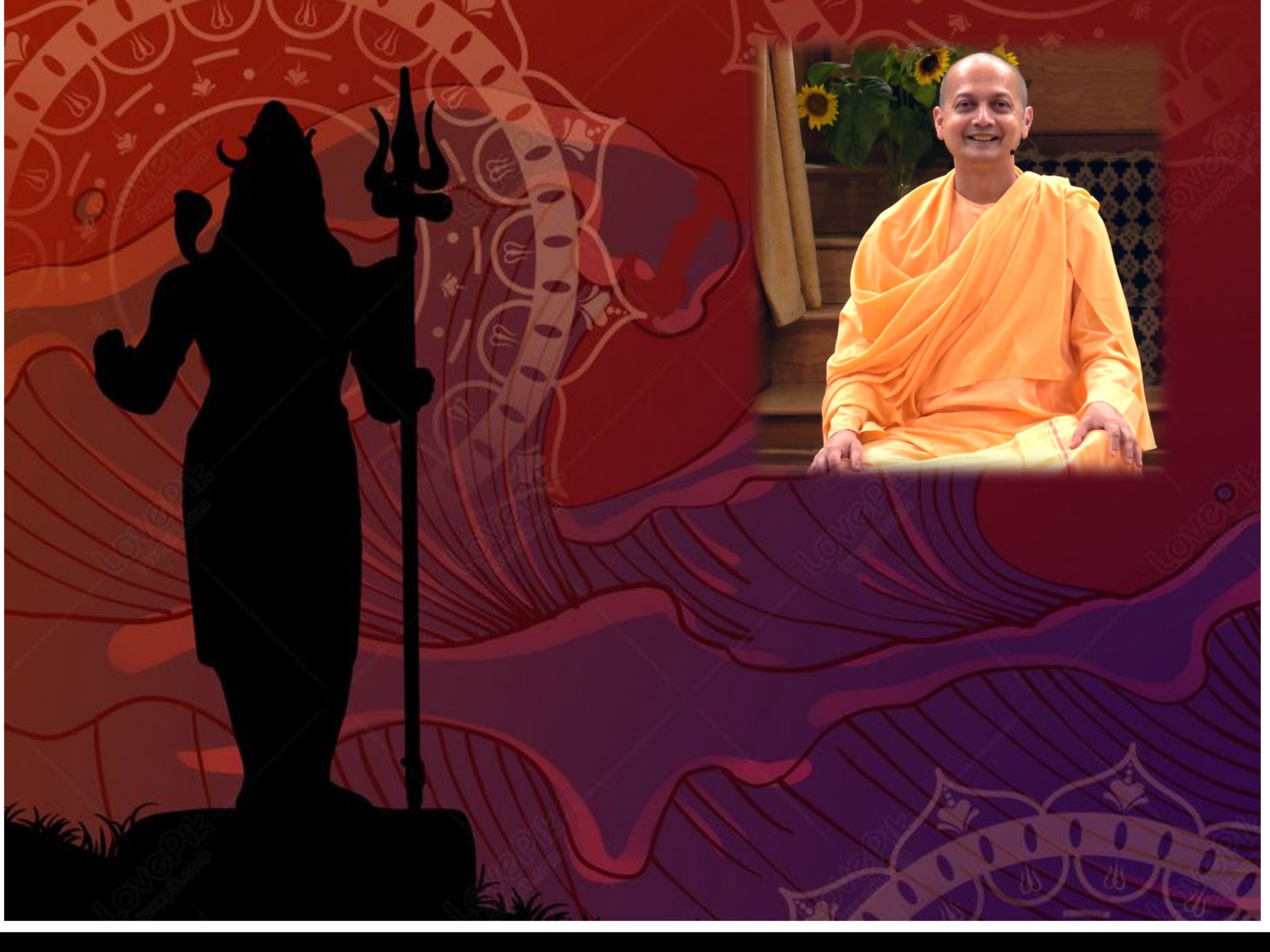
The following content is the theory part edited by Rajabhishek Dey (Centre for Indic Studies) from an online talk on meditation class by Swami Sarvapriyanandaji. Being his admirer, the summary of the original speech by Swamiji is rewritten and reshaped in this article format with an intention to spread his voice more for our readers. The discussion is taken from the YouTube channel of Vedanta New York.
To put the entire philosophy of Kashmir Shaivism in one line, it states that “You are Shiva”.
Everybody of us is Shiva. Who is Shiva? It is the ultimate reality of this cosmos. We have forgotten it. Since we are unaware of it, we have to realize it again. And, realizing it is freedom, the freedom from the shackles of Samsara, which is like a prison. This is the central teaching of Kashmir Shaivism.
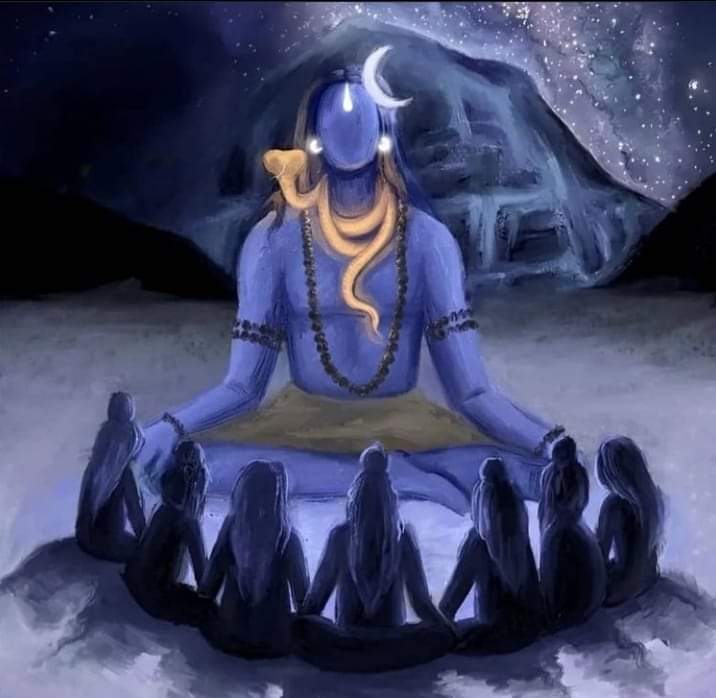
Here, the nature of realization is “recognition”. Notice the interesting aspect when we “recognize” anyone. This is not only seeing or not just memorizing but is both the activities of “seeing” and “memorizing” at the same time. When we suddenly meet a person after many years and whom we already know we exclaim, “Oh, you are the one we met ten years ago!”. In this recalling, we are seeing and bringing back our memories simultaneously. This is “recognizing”. Thus, in Kashmir Shaivism, the basic idea is that- Shiva recognizes Shiva. Though it seems like that, “jiva” the sentient being is doing the task of recognizing but in reality it is Shiva alone who is identifying His own self.
Shiva by his very “Leela” has expanded and manifested His own self into the universe and us. The limit of the outermost expansion might be at the matter, energy, time and space level but there is a contraction also. It is the contraction of the glory of His divine nature hidden inside us. Thus, under the bondage of physical body, the same entity is called jiva. Jiva is born, and then age and eventually degenerates and die. Our thoughts are feeble, our knowledge is limited but we do not know that we are omniscient blissful infinite beings. The entire spiritual journey is again rediscovering the own nature.
One Kashmiri Shaiva story tells that once there was a great devotee of Shiva who dedicated his life to the Lord and always used to chant “Om, Namah Shivay”.
But alas! He was unable to catch the vision of Shiva.
-However, fortunately, one day he got a dream of Shiva and he anxiously asked, “Where can I find you prabhu?”.

-Shiva replied, “Calm down! Wait. You will see me tomorrow. The headless man whom you will encounter from now is none but me”. The next morning the man came out of his home and started to search for that headless man. Many hours passed but he could not get a glimpse of such a man.
-Suddenly his look fall downwards in his own body and he yelled, “Oh, no head! It is me!”.
Nonetheless, the Kashmir Shaiva philosophy is not that easy and is a vast philosophy with tremendous intricacy even if compared to Advaita Vedanta. Though at many steps Kashmir Shaivism sounds like the latter one since both are non-dualities, but there are differences between them. According to the formal one, Shiva nature besides its infinite existence and consciousness is also self-aware. It is not only the light but also its reflection which is aware of itself. This is called “Prakasha Vimarsha”. Prakasha means light. The light is not only just aware of the entire universe that it has projected but also aware of its own existence. However, Advaita does not accept this. It says that the ultimate reality-“You, the Brahman” is surely the light. That’s it! Self-awareness starts functioning as the mind starts to work. Through Maya, that consciousness has projected the total cosmos including the mind and body. Here, the mind with which you become aware and start thinking, “Yes I am this” or even “I am Brahman” is also the mind and ultimately not real. Only, unlimited awareness is real. In this context, a Kashmiri Shaiva practitioner would argue that this is practically useless. Unless you are infinite and aware of your infinitude, where is the fun? So it is basically a philosophy of fun. From here, they extend by saying that Shiva is having fun in this universe by recognizing his own nature. Hence, self-aware or vimarsha is like not only do I have a face but I also have a mirror. And, I’m aware of my own face in the mirror. This part Advaita Vedanta would dismiss as Maya or appearance. On the other hand, Kashmiri Shaivism says that’s an integral part of reality and without that, you cannot explain the universe. This vimersha is the power of consciousness called “Shakti”.
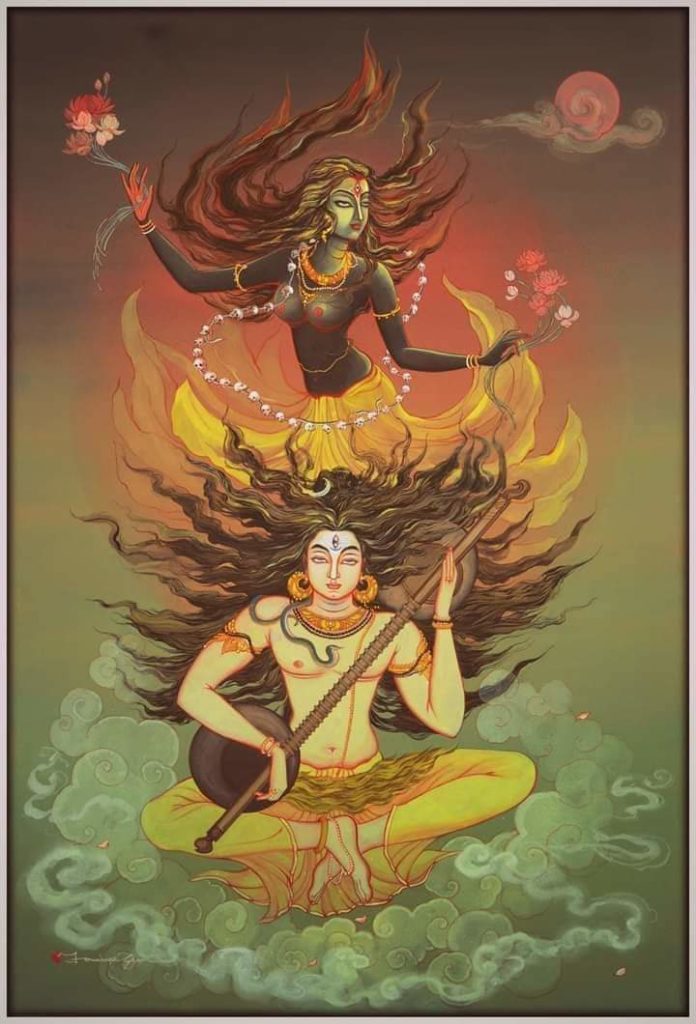
Thus, in Kashmir Shaivism, Shiva and Shakti are both ultimately real. Shiva is the consciousness and Shakti is the power of consciousness. So the first thing to be considered is the vimarsha. Through this consciousness is aware of itself and indivisibly shiva and shakti are together.
Now this consciousness and vimarsha or self-awareness have three further powers.
✔Gnana or knowledge: the ability to know. Not only is it aware of itself but also it is aware of everything.
✔Iccha or ability to desire and
✔Kriya or ability to act
About all of the above Advaita would say that it is Maya and after Maya. Nevertheless, Kashmir Shaivism says they are real- the ability to know to desire or will and to do.
Moreover, those are essential powers of Shiva. But down to us though we all have those powers but we jivas are unfortunate as those powers are very feeble.
We have knowledge but our knowledge is of material reality. We see things, hear, smell, taste, touch, we think and remember. That is our knowledge. This is a dualistic kind of knowledge-very limited! We see the universe slice by slice, little by little only unlike that of Shiva who is omniscient and knows everything of it including his own nature all at once and all the time without limit.
Our “Iccha” or desires are very feeble and they are about material things. We want little pleasures, little satisfaction. Our capacity is very limited whereas, Shiva desires this entire universe as a game. It is a very pure desired bliss to manifest this bliss as this universe. Furthermore, in the kriya the ability to act or the willpower in converting our knowledge and desire into action we are very feeble. Only physically can we only control this body, this speech and a little bit of the mind. That is the limit of our capacity even at best and that is also for some time. Again, the next day we might lose it.
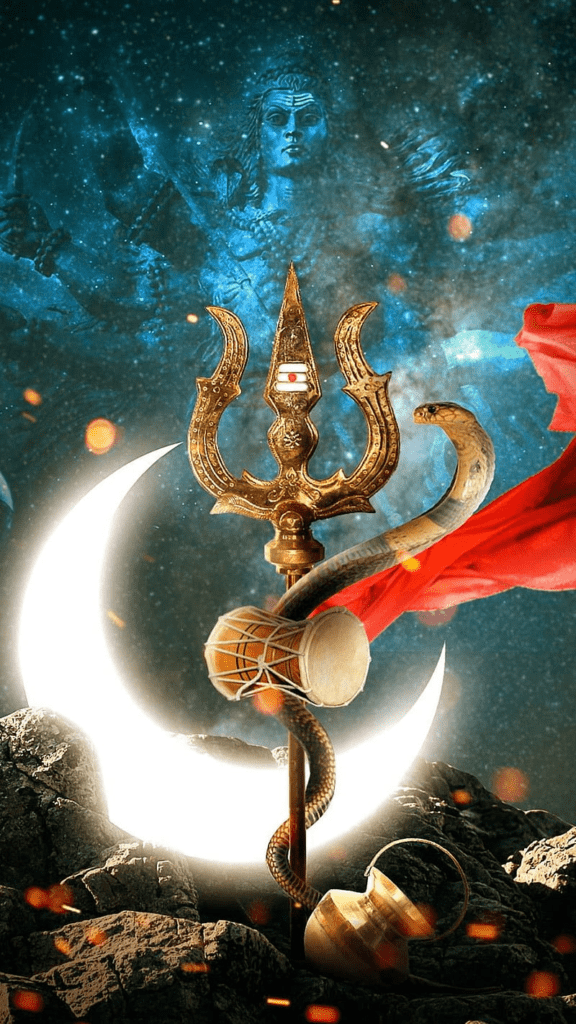
We all have seen Shiva always depicted with a trident or Trishula. That trident is nothing but these three powers. We have seen this in iconography but the inner meaning is explained there in Kashmir Shaivism.
The philosophy is also called trika or three or the triadic philosophy. The reason is that the core entities considered here are Shiva, Shakti and Nara. Though “Nara” literally means human in Sanskrit but for here we have to keep every sentient beings in mind. This philosophy of triad does not neglect the sentient beings as we have to start from that level of individual being. Here, lies the basis of meditation in the Kashmir Shaiva pathway.
All of our experience is of subject and object- I am the seer and this is seen. By “seen” means the use of every sense organ that might we hate or like. This is our ordinary life. But philosophers act differently. The theist devotee puts the ultimate reality on the side of the “Drishya” or observable objective universe. He claims, “Here is this vast universe and behind this vast universe there must be a power who created this universe… who sustains this universe… including us who protects all of us and ultimately dissolves it back into itself that power. I proudly call it my beloved God!”.
But remember, it’s that for me only. That reality could be in heaven, could be within us, or could be whatever- transcendent and imminent god! So “I” am the subject and the ultimate reality is the object which I am trying to realize. Note what will happen here as I try to become one with God through devotion and prayer or meditation whatever path I undertake. A little bit of a difference is bound to remain in principle because whatever is God will appear to “me” which is the consciousness. The consciousness will have to remain if I have to experience God. Hence, that difference between devotees and God will remain. This is what we call the dualistic path. However, devotees must not worry because that is what an ideal devotee wants. A devotee knowingly does not want to become honey but only wants to taste the honey.
The other ways like in Samkya and Yoga, the ultimate reality is put into the subject. Here, we turn away from the objective universe into the subject discarding it. Then we dive into the subject through meditation which is called Samadhi.
However, the external universe still remains unresolved as a separate material universe. Thus tension is created between the external and internal- the world and spirituality. So, in most of the monastic traditions, they step away from the world. This is fine but of not much use to people involved in the world. On the other hand, the Buddhist approach oversimplifies by concentrating on the relationship between subject and object. Thus they discover both the subject and object to be ultimately empty and thereby free themselves. These breathing techniques help them as can identify the breath and breathe both to be empty. Nevertheless, what Advaita Vedanta and Kashmir Shaivism do is different. They say the subject and object and the experiences of the whole thing are an appearance of an underlying ultimate reality. It is Shiva or Brahman alone who appears as you the knower, the known object and your experience of knowing, seeing, hearing, smelling, tasting and touching.
I, the eater + The food that is eaten+ The act of eating= Brahman
It is non-dual, which means it’s not a separate thing. Subject and object are not two separate things both are actually appearances of one reality
Swami Vivekananda put it very simply. He said, “One only exists. It appears as nature (objective universe) and the soul (I, the experience).”
Kashmir Shaivins would say, “Yes! And that one is our Shiva, not your Brahman”.
But they are more radical than non-dualists. What is the problem with non-dualism? For Advaita:
▶we do not know our Brahman nature
▶ignorance is the problem and
▶we have to overcome ignorance
▶we have to hear the teachings and contemplate them and then meditate upon them (shavana manananan)
But the Kashmir Shaivits are even more radical as they say:
➠who can obstruct Shiva?
➠it is Shiva’s desire to appear as the jiva right now
➠therefore you the Shiva are playing the role of a jiva
➠you are acting the role of a jiva
➠when you want freedom no Maya or ignorance can stop you
➠why will my ignorance stop you? because Maya (Vimarsha Shakti for Kashmir Shaivism) is your power
➠you have used your power to project a universe and project yourself into this universe as this little creature, as the jiva, as the human sentient being
➠when you want to realize yourself nothing can stop you
➠when Shiva wants to realize his Shiva nature nothing can stop you (Shiva nature is irrespective of gender and not only for males)
➠the moment you want it, it will be there- immediately without any gap in time
But one can say, “I want to realize it now. So, why? Why am I not realizing it? What is stopping Shiva?”.
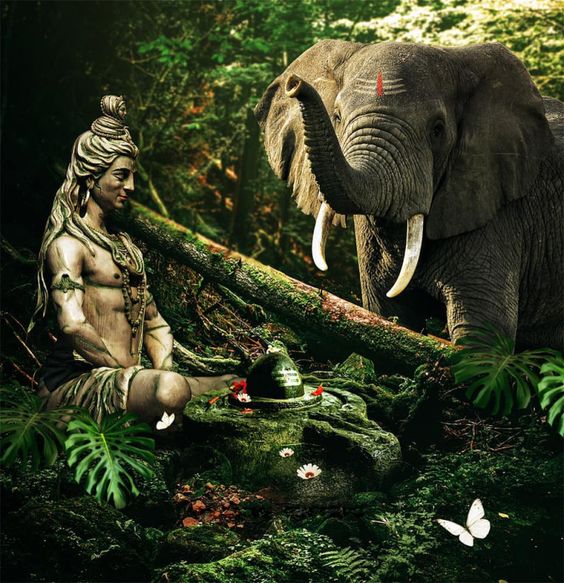
Right now, according to the Kashmir Shaivites, “You” the Shiva is playing the role of a spiritual seeker. Shiva actually does not want to realize it or be enlightened. He just wants to play the role of a seeker who wants to realize- a sadhaka. A sadhaka is a person who is the one who wants to attend retreats and listen to talks and practice meditation. The moment Shiva wants enlightenment it will immediately you will become enlightened. Thus they are more radical than the Advaitins.
Let’s look at what are the approaches.
In dualistic devotion- devotion, prayer, contemplation
Buddhist meditation– following the breath and staying there keeping the mind focused
Advaita Vedanta- Studying Upanishads, listening to teachings, interpreting and understanding and living with that.
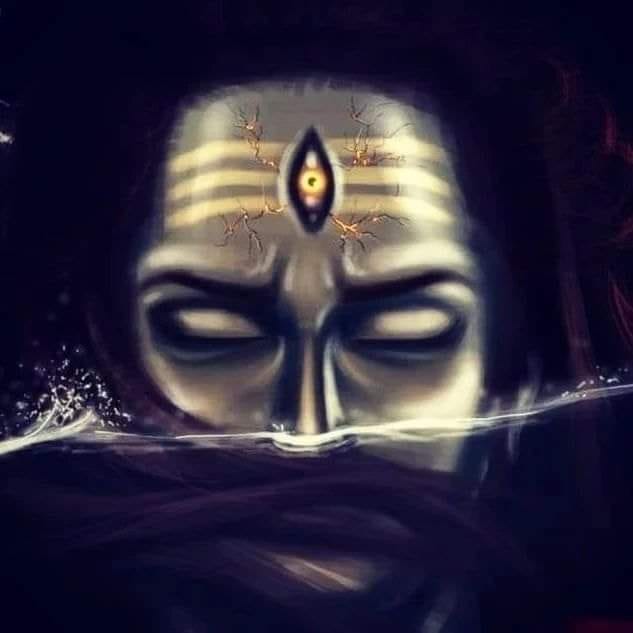
Now, on the other hand, there are four broad approaches towards enlightenment in Kashmir Shaivism. The ways or methods are called upayas. It is to be noted, upaya is not Shiva. It is something that you hold so that jiva can realize itself as Shiva and also temporary. They are as follows.
➱Anupaya (No path): Path of no support, prayer etc. This can happen by the grace of Guru or any sudden awakening through mantra or moral stories or anything, leading one directly to the final stage. After that, one can continue with his necessary sadhana. This is not in our hands and one must not wait for it.
➱Shambhavopaya (The path of Shambhu or Shiva): It is similar to Advaita and the practice is very much like Dhyana Yoga.

➱Shaktopaya (The way of Shakti or divine mother): It is a technique of Mantra meditation. Here, all 52 letters of the phonetic Sanskrit language are illuminated by consciousness. Considering the consciousness and manifestations together, in Kashmir Shaivism, these letters illumed by consciousness are called Matrika. This traps us into Samsara as nama rupa (form and labeling/name). This is the divine language that frees us from worldly language.
➱Anva upaya or Anvopaya: Anva means tiny. The tiny one is us who are in the contracted state of glorious Shiva.
These techniques have details and are mentioned in the book named, Vigyan Bhairava.
The Sanskrit letters start with A (अ) and end with Ha (ह).
Now, from A to Ha, we have a permutation combination of all letters. And if we put a dot over the last letter while pronouncing अ ह it sounds Aham or अहं(अहम्). And Aham also means “I”. So, “I” also encompasses all the letters and thus all the names. So your name means the entire universe.
Apart from that, another way of writing the word is अहन्. हन् means that can be destroyed and as we add अ before that it means, “One that cannot be destroyed” i.e. immortal. However our “I” is a limited ego while Shiva’s “I” is Purna Ahanta or cosmic “I” and that is the real nature of all of us.
Again, look at the inner meaning of Bhairava
Bha (Bharana)- That state which fully supports the entire universe
Ra (Ravana)- That into which dissolves the entire universe
Va (Vamana)- That which projects the entire universe

That is how we understand God the Bhairava. Again, the form of consciousness which is full where the entire universe is fully functioning, with tremendous activities of all good and bad things in front of us is Bharitakara or Bhairavi, the female form of Bhairava. And, in opening the third of Bhairava we see everything as divine which in Advaita terms is the state of “Turiya”.
Thus, Kashmiri Shaivism is full of esoteric deep meanings.

These techniques have detail and are mentioned in the book named, Vigyan Bhairava.
Further, those who want to practice the meditation technique can follow the first technique from the book which is also the most popular one.
Associate the breathing in with the sound “Ham” mentally and the breathing out as “Sa” mentally.
Hamsa literally means, “I am that/Shiva”.
To follow the meditation techniques practically from Swamiji watch the original lecture link.
Watch the full video here:
Center for Indic Studies is now on Telegram. For regular updates on Indic Varta, Indic Talks and Indic Courses at CIS, please subscribe to our telegram channel !
- 201 min read
- 4
- 0










